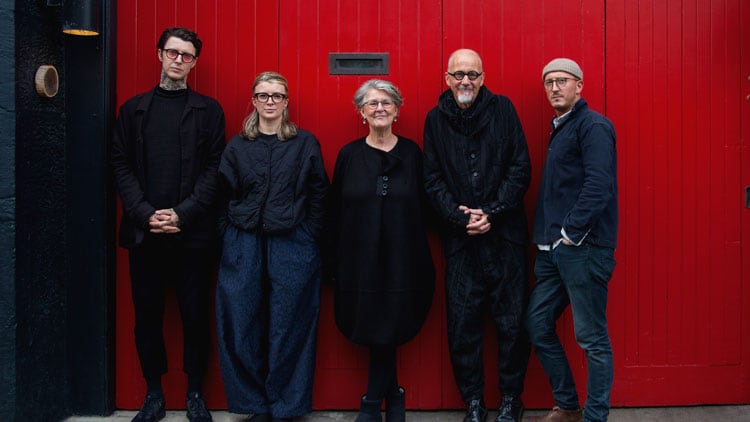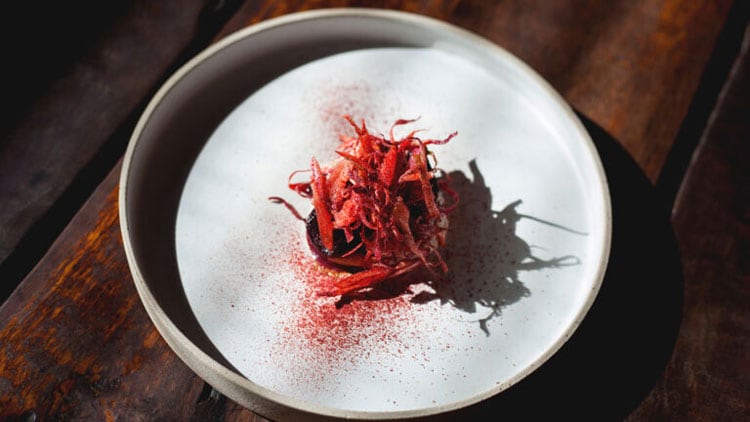“It feels quite extraordinary,” says Andrew Radford, reflectively, as his eyes turn towards the dining room of Timberyard, the Edinburgh restaurant he launched with his family just over a decade ago. It’s an apt description, and in more ways than one. After all, 2023 is turning out to be a big year for both Timberyard and the Radford family.
Back in March, the restaurant was awarded its first Michelin star, cementing its place in the Scottish capital’s fine dining landscape. “We kind of knew it was coming,” says Radford, with a smile. “Naturally you’re not told anything by [Michelin] in advance, but we’d been invited to the ceremony, and we didn’t think it could be for any of the other awards. But then you catastrophise and think maybe it’s all just a mistake. Thankfully it wasn’t, and with that came a lot of excitement.”
Clearly not ones to rest on their laurels, the Radfords have followed up this achievement with news that they will open a second outpost in Edinburgh later this year – a wine bar and restaurant in the city’s Abbeyhill area called Montrose House. Occupying the former Abbey's café site on Montrose Terrace, the new venture will be led by the Radford family in partnership with Timberyard head chef James Murray, and will no doubt further strengthen the family’s legacy.
Old hands in the Edinburgh dining scene
The Radfords themselves have been a fixture of the Edinburgh dining scene for around 30 years now. Prior to Timberyard’s launch in 2012, Radford and his wife Lisa operated two restaurants in the city – The Atrium and Blue, which ran for 18 years and 14 years, respectively. When Timberyard opened, the couple’s children – Ben, Jo and Abi – joined the family business alongside their parents: Ben as head chef, Jo helping to run the front of house, and Abi as the restaurant's personal assistant and social media guru.
In the intervening decade, the roles of each individual have changed and evolved – Ben now oversees the operation in more of an executive role, Jo leads the both the front of house and the restaurant’s extensive drinks programme, and Abi runs all of Timberyard’s marketing and comms. Radford also notes that the team has expanded significantly over time, with manager Peter Johnson, drinks and bar manager Anna Sebelova, and Murray, amongst others, now all integral to the restaurant's operation. But nevertheless, all five members of the family remain actively involved in the day-to-day operations. And remarkably, given how notoriously stressful running a restaurant can be, they all still get on well with each other.
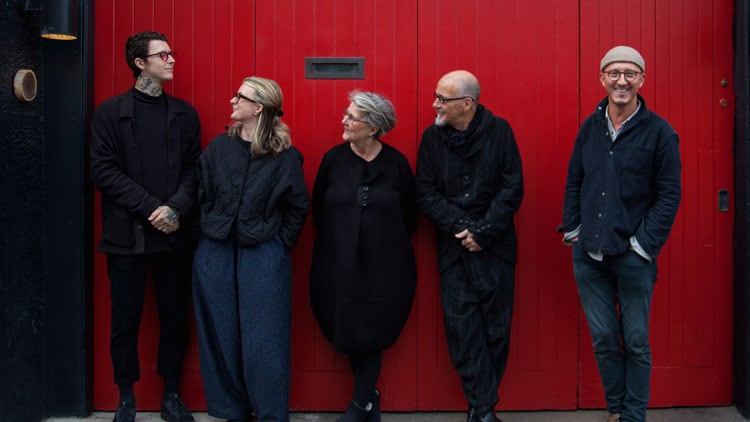
“It’s certainly easy to become slightly complacent about it and be reminded that it is quite unusual for a family to work so closely together,” Radford responds, thoughtfully, when I suggest that maybe that’s the most extraordinary thing of all. “And to do it for such a long time in the restaurant, under the same roof, we’ve all naturally found areas we enjoy and are good at.”
The Radford’s decision to join forces for the launch of Timberyard was spurred on by Ben, Jo and Abi, who were each working in the industry already – Ben and Abi at different restaurants in Edinburgh, and Jo in Australia. “They were talking about wanting to do something new, and eventually we thought ‘why don’t we all do something together?’.
It’s not all happy families, but it works.
We get on to the point where some might see it as being slightly weird.
“From the outset, the dynamic really worked. They were bringing the energy and drive that Lisa and I were beginning to lack, and that was needed.”
Radford, who wryly describes his own role at Timberyard as ‘overseeing all the bits that you only notice if I stopped doing them’, makes no bones about the challenges that come from working so closely with your family.
“It’s not all happy families, but it works. We get on to the point where some might see it as being slightly weird. We have a forum for discussion and rules that we stick by, which help. We have separate What’sApp chats for family and for work things. And when we’re out of the restaurant it’s very much mum and dad and kids, but inside it’s first names all round.”
Does the business chat end at the door?
“Not really. There’s inevitably pillow talk and phone calls late at night. The main thing is you’ve always got to listen to each other.”
Shelter from the storm
We’re sat in the entrance area of Timberyard on a Friday night in late June. It’s not exactly your typical summer’s evening (although some may say it is for Edinburgh). Rain lashes down outside; it’s cold, grey and, frankly, miserable. Inside, though, things couldn’t feel more different.
As the name suggests, Timberyard sits on the site of a former timber yard, although in its century plus lifespan (it was originally built in 1895) it has also operated as a prop and costume store for the local theatres, and as a depository for department store chain House of Fraser. Located on Lady Lawson Street, less than 10 minutes’ walk from Edinburgh Castle and the Royal Mile, it simultaneously feels like it’s in the centre of town and a little off the beaten track.
When they began looking for a new site, the family were keen for it be a space that hadn’t been a restaurant before, as had been the case with The Atrium and Blue. They first explored the idea of taking over a small bookshop, but then found this site. “We wanted it to be central, but also slightly out of the way, which this is,” says Radford. “When we first walked in it hadn’t been occupied for some time. It felt unusual, and interesting.”
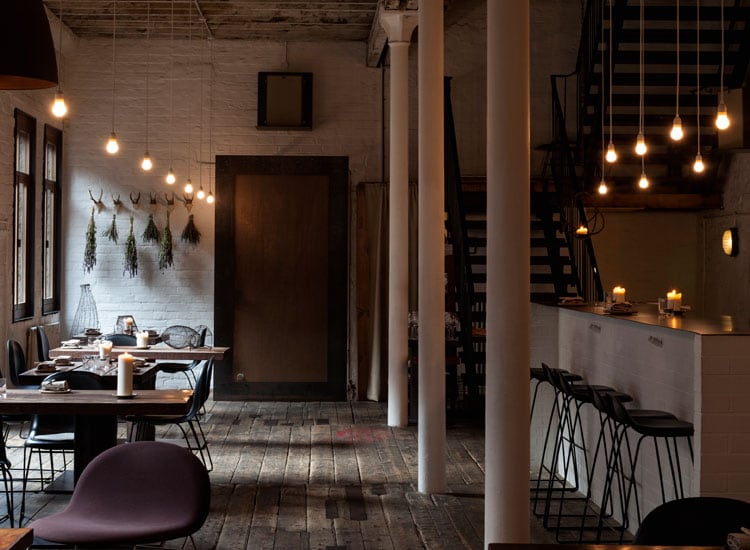
There’s certainly a captivating energy to Timberyard. With its whitewashed brick walls, exposed high ceilings, rustic wooden floors and gentle lighting, it’s a beguilingly romantic restaurant – warm and enchanting, serving as a perfect sanctuary from the storm outside. As we talk, the first diners of the evening eagerly take their seats. Over the speakers comes an atmospheric soundtrack that combines the likes of American singer-songwriters Townes Van Zandt and Terry Callier with English folk musician Shirley Collins and Radiohead’s Jonny Greenwood – an eclectic compilation that won praise from the Michelin inspectors, and which juxtaposes neatly with the audible patter of the rain.
Michelin ambition
One key area where Radford credits Ben, Jo and Abi as a driving force is in the attainment of Timberyard’s first Michelin star. He and Lisa previously held a Bib Gourmand – awarded to restaurants 'offering particularly good quality, good value cooking' – for more than a decade at The Atrium before its closure, but this is the first time any of their restaurants have successfully earned a star.
“It’s having that new generation,” he says. “Ben, Jo and Abi came and wanted to push the restaurant further.”
Propelling that progress alongside the younger Radfords is Timberyard head chef James Murray, who joined the restaurant in 2021 having previously cooked at London restaurant Lyle’s, Raymond Blanc’s Le Manoir aux Quat'Saisons, Nur in Hong Kong, and The Edinburgh Food Studio. Murray was already known to the family and was looking for a new challenge, so Ben and Jo approached him about the head chef role.
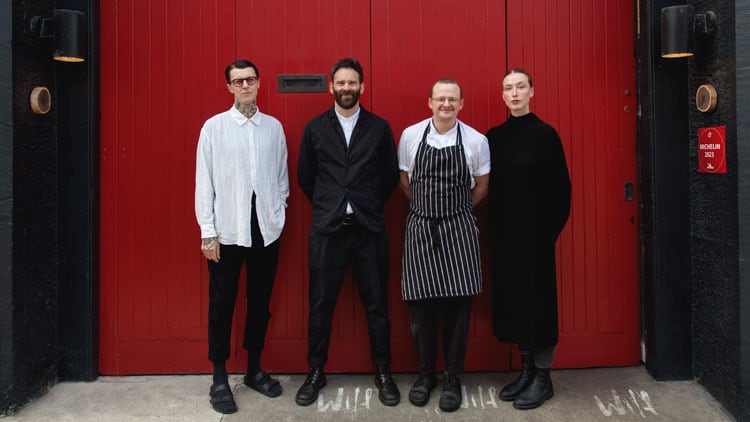
Given the appointment came at a time when the restaurant was still trying to fully recover from the impact of the Covid-19 pandemic, Radford admits it took some convincing. “Timberyard was recognised as being a good restaurant and guests would come back, but if we wanted to hit the next level, we needed to bring someone new on board. It was a big investment taking on a chef of that level, and there was a risk it wouldn’t work. But [Ben, Jo and Abi] thought this was the way to go. Between them they promised to get a star, and they delivered that.”
Nordic influences
Radford notes that Timberyard has always been a more elevated proposition than either The Atrium or Blue. The food is very ingredient focused, with Murray prioritising a ‘less is more’ approach using light, delicate flavours that complement each other.
Diners can choose between a five and seven-course tasting menu, with a three-course set menu also available at lunchtime. Dishes change regularly through the seasons and are neatly refined, with an emphasis on just a few prime ingredients, and can include the likes of razor clam with nasturtium, Tokyo turnip and green strawberry; white asparagus served with a coddled egg, guanciale, Comté and hazelnut; veal sweetbreads with young courgette, burnt honey and blackcurrant leaf; and turbot with cucumber, sea aster, preserved lemon and lobster butter.
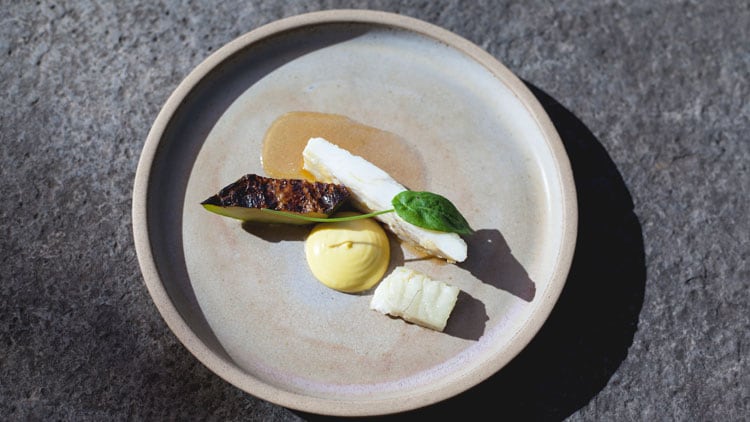
Radford describes Murray as having ‘levelled up’ the kitchen since he joined, bringing a consistency to the food that’s sought by the Michelin inspectors. Indeed, the Guide makes direct reference to Murray’s skill in its appraisal of the restaurant. But while the Michelin star has further bolstered the restaurant’s reputation – “It’s had a dramatically positive effect on business,” says Radford – Timberyard has long been critically revered.
Back in 2014, Marina O'Loughlin wrote in The Guardian that Timberyard had earned its moniker as a ‘game-changing’ restaurant. “There's a lot to love,” she wrote. “From the handsome beardy staff, to an alluring wine list, to a menu that marries Nordic pickling, foraging, smoking and curing with classic French technique and a refreshing fondness for fine Scottish dairy products.”
The reference to Scandinavian influences is particularly astute. Timberyard has clearly been shaped to some degree by the esoteric, New Nordic style that defines the likes of Kadeau, Relae and Noma in Copenhagen, although Radford says the concept was never directly modelled on it. “We’ve eaten out a lot as a family and travelled a lot to Scandinavia. And when that Scandi/Copenhagen vibe started it immediately appealed.
“Noma opened in 2005. We ate there a year later and thought ‘fuck, this is amazing’. We’d read a couple of reviews and expected high standards, but goodness it was extraordinary.”
Sustainability drive
The restaurant’s Nordic tendencies are perhaps best expressed by its commitment to sustainability and using locally sourced, foraged and seasonal ingredients – something that, while commonplace in restaurants now, was seen as being far more ahead of the curve when Timberyard launched. “It was seen as very progressive here, but they were already doing this in Scandinavia. Following the seasons and putting the spotlight on local ingredients… all these things that are now PR clichés, we were doing that from the start.”
One of Radford’s ambitions is to parlay the restaurant’s eco-friendly credentials into a Michelin Green star – which highlights restaurants at the forefront of the industry when it comes to their sustainable practices – to sit alongside its current accolade. “I actually asked myself if I would have been ok if we had received a Green star this year instead, and I think I would have been really pleased. This is what I’ve been doing throughout my career in kitchens.”
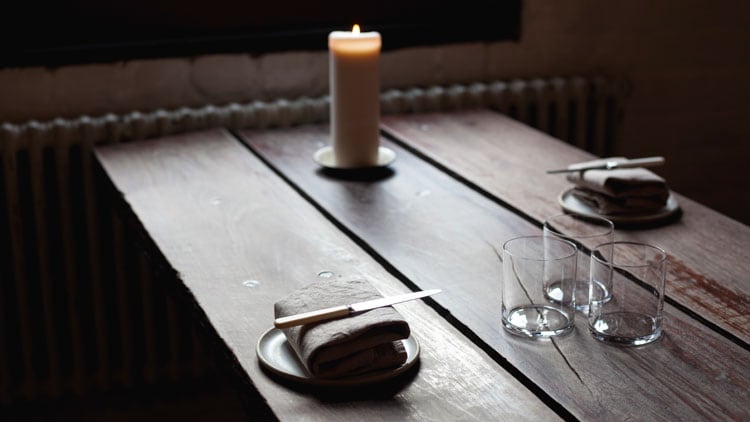
As well as Timberyard’s approach to ingredient procurement, almost all of which are sourced from the Scottish larder, there’s also its extensive drinks programme that plays into its sustainability ethos. All the wines are natural and from Europe, with Radford insisting it is “one of the best wine lists in Britain”. The team also decided early on that it wouldn’t buy in soft drinks, meaning all the non-alcoholic drinks are made in house – taking that idea of sustainability further. This extends to water too, with Timberyard offering still or sparkling water that’s filtered at the restaurant. Additionally, rather than charge for it, guests that ask for water have a £1 charity donation added to their bill.
Taking a step back
Throughout our conversation, Radford makes continued reference to his and Lisa’s plan to take more of a backseat role in the business in the years to come, with Ben, Jo and Abi set to be more central figures. This is the case with Montrose House, which is described as primarily being a partnership between the younger Radfords and Murray.
“It’s about finding a way to let things go,” says Radford. “I’ve come through my career in control of everything, and I now realise I have to give up a bit to the younger guys. They’re now taking the ball forward.”
It hasn’t been an easy process, he admits. “It’s all or nothing for me, which isn’t unusual in hospitality. There are a lot of control freaks in this industry, and so relinquishing some of that can be hard.”
I’ve come through my career in control of everything,
and I now realise I have to give up a bit to the younger guys.
They’re now taking the ball forward.
Even though he may be looking to take a step back, there’s no end to Radford’s ambition. Bringing Montrose House to fruition has taken nearly five years, but there are plenty of plans for further concepts, including a possible plant-focused restaurant, although he admits that the likelihood of it actually happening is somewhat slim. “I don’t know if it’s realistically on the cards,” he says, with a smile.
“As a family you always discuss the ambitions that each individual has. We talk about that often, and whether we would we want to something else after Montrose House.”
A pause, and he adds: “It’s a possibility, perhaps. Maybe we could something smaller. But who knows.”

